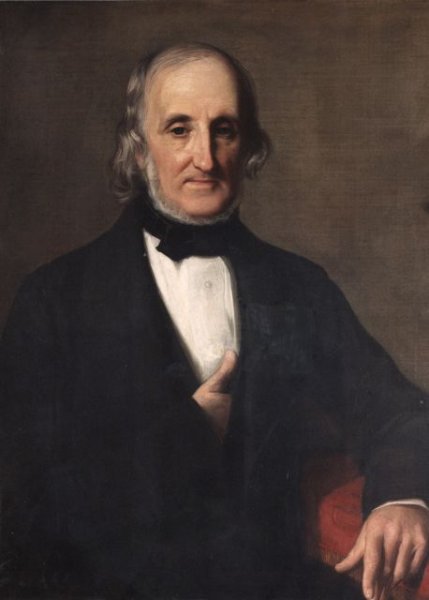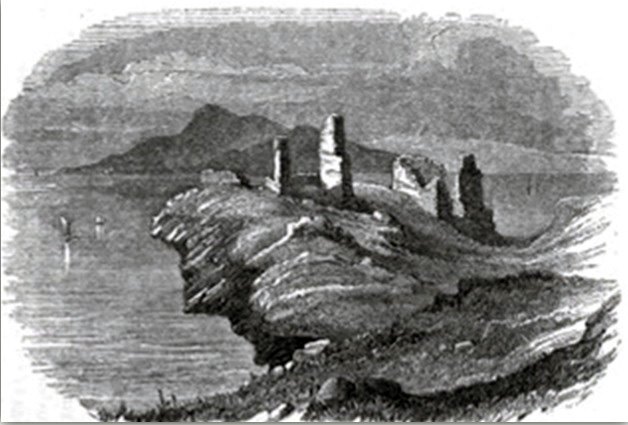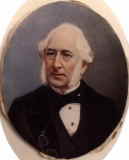
In an extensive piece written about Kilbarron Castle in a book called “Tours in Ulster– A handbook to the Antiquities and Scenery of the North of Ireland” the author begins by remarking that “The castle of Kilbarron memorable as the ancient residence of the hereditary annalists of the kingdom (Tír Connaill) is situated on the sea coast, about three miles from Ballyshannon. It was in this castle the justly celebrated Annals of the Four Masters were composed. The accompanying sketch from the pencil of George Petrie, Esq, will convey an accurate idea of its present extent. Some idea of the liberal patronage bestowed by the native princes upon the literati may be formed from the extent of the estates granted for the support of these annalists”.

The book written by John Borbridge Doyle and published in 1855, promotes a series of tour routes across the nine counties of Ulster (as well as the Cooley Peninsular) He extols the scenic virtues of the province but additionally delves into the historic background of the many places of antiquity as well as remarking on the modern buildings of the period. He bases many of his tour routes on the growing extent of the new railways that were being built at the time. Some lines were still under construction such as the Dundalk Clones and Enniskillen line which by this time had only reached Castleblaney and one had to get a coach to Fintona in County Tyrone to link up with the Omagh to Derry line.

John Borbridge Doyle was one of nine children born to John Doyle and Sarah Borbridge who came from Dunganstown in County Wexford. He married Anne Smith and spent the latter years of his life living in Clougharevan, Bessbrook in County Armagh where he died on the 19th April 1882. He published an earlier book in 1852 called “Lesser Lights of Scripture. Dorcas and Ruth” which is currently out of print.
John Borbridge Doyle was obviously a man of artistic ability as many of the sketches in the book Tours of Ulster are by his own hand. As noted earlier the lithograph of Kilbarron Castle was sketched by George Petrie whom he further quotes his remarks on Kilbarron Castle “From the singularity of its position, situated on a lofty precipitous nearly insulated cliff exposed to the storms and billows of the western ocean, the reader will naturally conclude that this sad dilapidated and time worn ruin must have owed its origins to some rude and daring chief of old, whose occupation was war and rapine, and whose thoughts were as wild and turbulent as the waves that washed his sea girt eagle dwelling; and as such in their ignorance of its unpublished history, has been the conclusion by modern topographers that it must have been the habitation of freebooters. But not so. This lonely insulated fortress was erected as an abode for peaceful men -a safe and quiet retreat, in troubled times for the laborious investigators and preservers of the history, poetry and antiquities of their country”.
